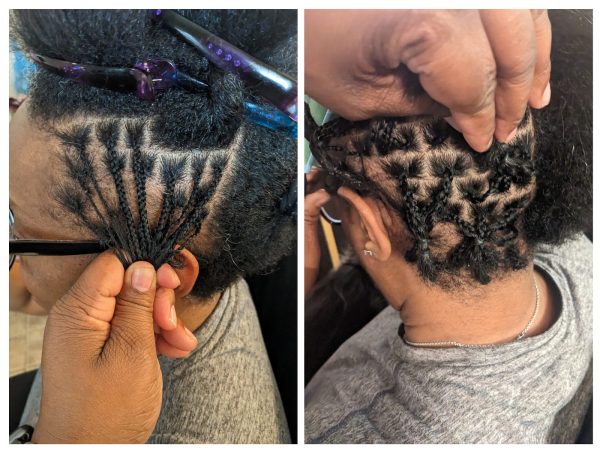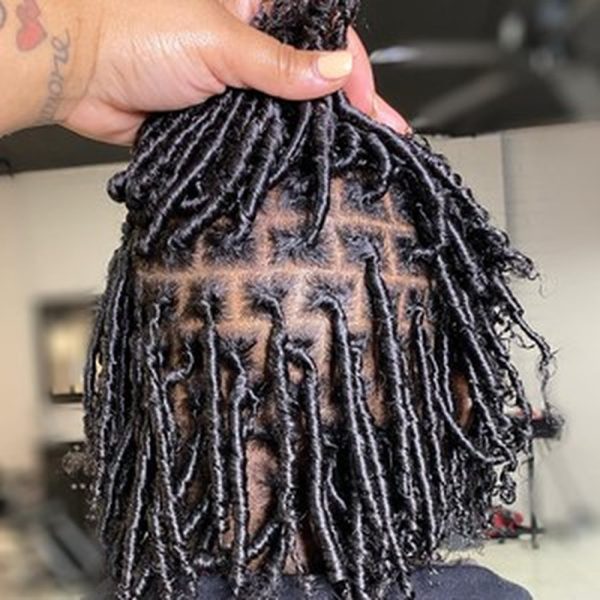The process of getting dreadlocks is an interesting trip, and the parting is an important factor in determining how they look in the end. Choosing the appropriate way how to part hair for dreadlocks can make a significant difference, regardless of whether you are an experienced loctician or just starting on your journey with dreadlocks.
How to Part Hair For Dreadlocks
When it comes to the process of getting dreadlocks, the materials used in the process are to be considered. They include a Rattail comb, Hair clips (optional), and a Mirror. Let us look at the steps on how to part hair for dreadlocks.
Choose Your Parting Style
Choose your desired dreadlock look from grid patterns, brick lay patterns, freeform parting, or side parting. These options create a uniform, square-shaped dreadlocks, minimize scalp visibility, follow natural hair growth patterns, or maintain your preferred side parting. Things to Consider When Choosing Parting Style
- Desired Dreadlock Size: Smaller sections create thinner dreads, while larger sections result in thicker dreads.
- Scalp Visibility: Certain separation methods may allow for a greater amount of scalp to be visible between dreadlocks. Select a way that conforms to your personal preferences.
- Maintenance: Regardless of the separation technique, it may be necessary to perform occasional retouching to keep your dreadlocks nice and tidy during the maturation process.
Start at the back
Begin sectioning your hair at the bottom back of your head.
Make horizontal lines
Using the rattail comb, make clean horizontal lines over your head, working your way upwards. This will help you improve your hairstyle. A spacing of around one to one and a half inches should be left between each line. If it is necessary, you can use hair clips to secure these areas.
Create vertical lines
Once you have horizontal lines, you can begin to create vertical lines by intersecting the horizontal lines. This results in the desired parting pattern, which may be a grid, brick lay, or another pattern.
Make adjustments to achieve the appropriate size for your dreadlocks
The thickness of your dreadlocks will be set by the size of your sections. Dreads are made thinner by smaller portions, while dreads are made thicker by larger sections.
Parting around the crown
As you reach the crown of your head, create smaller sections following the shape of your hairline.
Popular Parting Style
It is important to choose a parting style that you feel comfortable with and that complements your desired dreadlocks look. It is not possible to identify a single “most popular” parting style for dreadlocks. However, the grid and brick lay patterns are popular parting styles for their uniformity, good scalp coverage, and versatility in hairstyles. They create consistent dreadlock sizes, offering a structured look, and can be styled in various ways, making them appealing to those seeking a defined aesthetic.
Grid Pattern

Many people believe that this particular kind of separation is the most popular because of its adaptability and the ease with which it can be created. The result is dreadlocks that are square-shaped and uniform, giving the appearance of being neat and organized.
Brick Lay Pattern

This pattern is quite similar to the grid, however it differs somewhat from it. To create the appearance of a brick wall, the vertical lines are staggered. This procedure helps reduce the amount of scalp visible between dreadlocks, which may result in an appearance that is more natural-looking.
Frequently Asked Questions and Answers on How to Part Hair For Dreadlocks
1. How small should I make the sections for my dreadlocks?
The thickness of your dreads depends on section size: smaller sections (around 1 inch or less) create thinner dreads, while larger sections (closer to 2 inches) create thicker ones. Choose based on your preference.
2. Will my parting style affect how my hair grows?
No, the parting style primarily affects the look of your dreads, not the actual hair growth. However, certain parting styles like freeform might result in less scalp coverage compared to grid or brick lay patterns.
3. Can I change my parting style later on?
While possible, it’s generally not recommended to drastically change your parting style once your dreads are mature. Doing so might require significant manipulation and potentially damage your dreads.
4. What if I make a mistake while parting my hair?
Minor mistakes during parting are usually not a major concern. As your dreads mature, they will naturally “lock up” and any small inconsistencies will become less noticeable. However, if you’re concerned about a significant error, it’s best to consult a loctician for guidance.
5. How often should I maintain my partings?
As your dreads mature, the partings might need occasional retouching. This typically involves using a crochet hook or your fingers to gently nudge any loose hairs back into the dreadlock and reinforce the parting lines.
6. Are there any tools that can help me part my hair?
A rattail comb is a common tool used to create clean and precise parting lines. Additionally, hair clips can be helpful for temporarily securing sections while you work on other parts of your head.
7. Should I consult a professional loctician for parting my hair?
While not essential, seeking help from a loctician can be beneficial, especially if you’re new to dreadlocks or unsure about the process. They can provide guidance and ensure your partings are created correctly.
Conclusion
Remember that the best parting style is the one that you feel most comfortable with and that fits the look that you want to achieve with the dreadlocks that you have chosen. Try new things and enjoy yourself while you’re doing it!

Leave a Reply